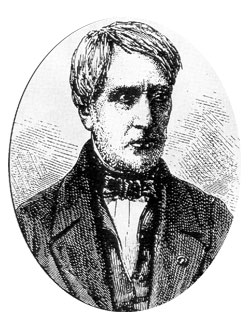
|
Antoine Cesar Becquerel
(1788-1878) may literally be called a “grandfather”
of electrochemistry, as he was the first of four generations of
French scientists who each made significant contributions spanning
two centuries. The four Becquerels succeeded one another as Professor
of Physics at the Museum of Natural History (Paris) and often worked
as father-son teams, advancing the knowledge in electrochemistry,
physics, biology, electricity and agriculture. Antoine Becquerel’s first electrochemical research described his observation of unexpected current when two pieces of platinum were dipped, in succession, into an acid. In 1829 Becquerel developed the Constant Current Cell. When this acid-alkali cell was monitored by a galvanometer, current was found to be constant for an hour, the first instance of “constant current”. He was only credited in France for his invention. English chemist John F. Daniell later developed an almost identical cell and was able to completely explain its action. Tragically, Becquerel received no acknowledgment of his invention in England during his lifetime. Becquerel enjoyed success in many areas. He helped validate Faraday’s laws and conduct extensive investigations on the electrodeposition of metals with applications for metal finishing and metallurgy. He published more than 500 papers, including a series on electrocapillary effects and an 1843 textbook on electrochemistry. Becquerel had entered science in poor health after completing a brilliant career in the French military Corps of Engineers. His first studies involved piezoelectricity, and he also jointly published discourses on the nature of electrical current with Ampere. |













